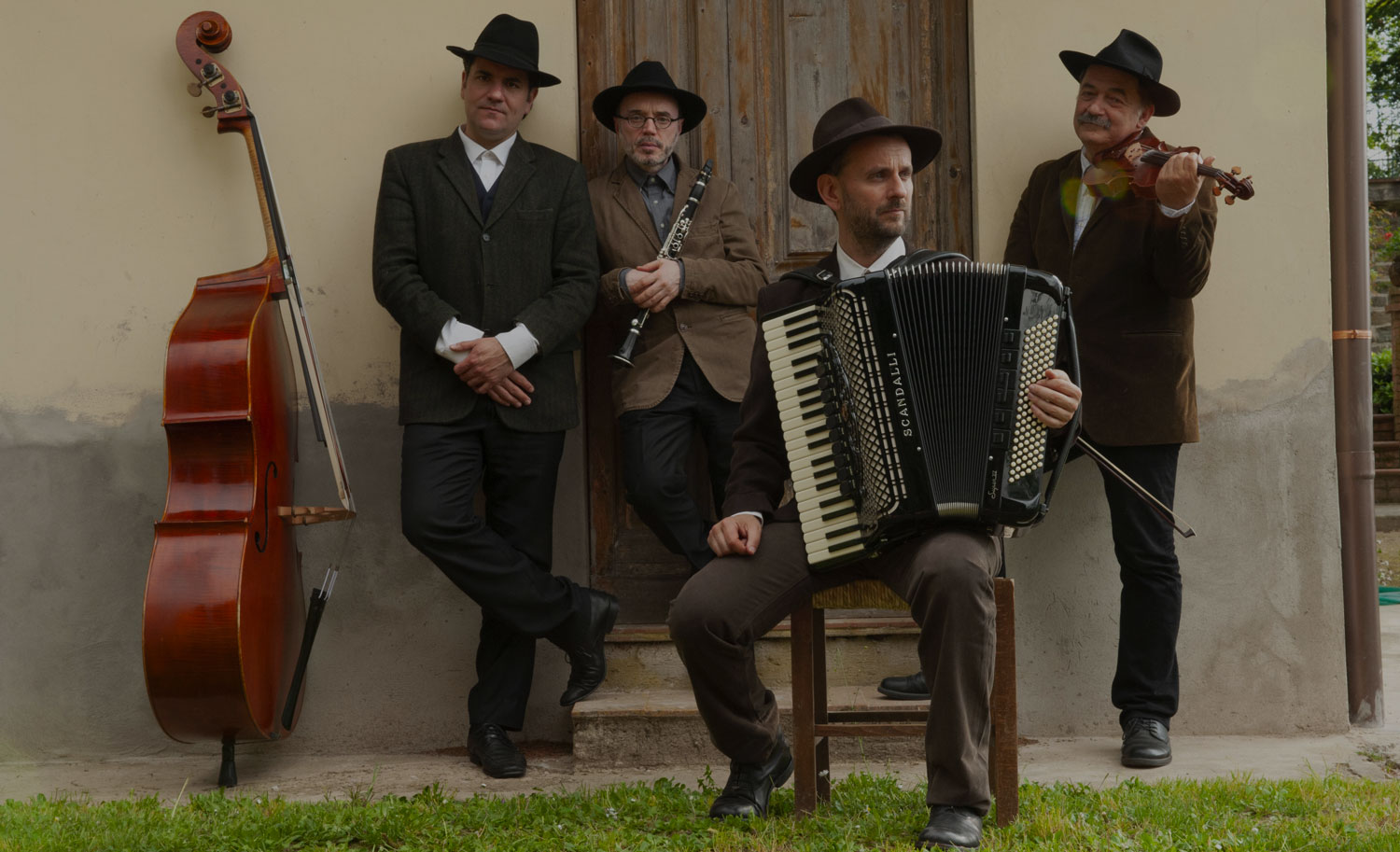THE KLEZMERATA’S PATH
Klezmer music is the instrumental heritage of the Ashkenazi Jews of Eastern Europe. For centuries, this music was created and performed by professional musicians, klezmorim, who earned their living playing at weddings and other public celebrations, and who orally transmitted their art from generation to generation. The artistic value of the klezmer musician was determined by his ability to move the listener, interpreting Jewish melodies as well as music belonging to other traditions in a variety of ways depending on the place, the occasion, the mood and his own technical skills.
The search for the almost limitless freedom of expression this musical tradition allows and requires from its practitioners was the main incentive to start Klezmerata Fiorentina in 2005. But there is another, more personal motivation, my Jewish-Ukrainian past. It provides a direct connection to klezmer music because many of these melodies, well known to my family in Kiev, are still vividly present in all my childhood memories.
Thanks to an artistic encounter with extraordinary Italian musicians, fellow soloists in the Maggio Musicale Orchestra of Florence, the clarinetist Riccardo Crocilla, the bassoonist/accordionist Francesco Furlanich and the double-bass player Riccardo Donati, I was able to realize my dream of forming an instrumental ensemble able to treat this material as improvisational chamber music. We started by working with the authentic and very rich archival material collected in Ukraine in the 1920s and ‘30s by Prof. Moshe Beregovski, who recorded and transcribed hundreds of traditional melodies for the first time using modern ethnomusicological tools. The idea of the group was to create a new genre of contemporary music, which must remain unwritten and which, at the same time, incorporates a vast variety of expressive means from classical music thereby enriching the original ethnic material. We conceive of this music as spoken language, and use specific, centuries-old instrumental techniques based on inflections of the Yiddish idiom to carry on an emotional, musical conversation in front of the audience. In this way, the depth and immediacy of expression become our main tool in discovering and then revealing to the listener sparks of the eternal soul of humanity that are hidden within the notes of these old melodies.
And this, I believe, is the Klezmerata’s path.
Igor Polesitsky
OUR WAY


